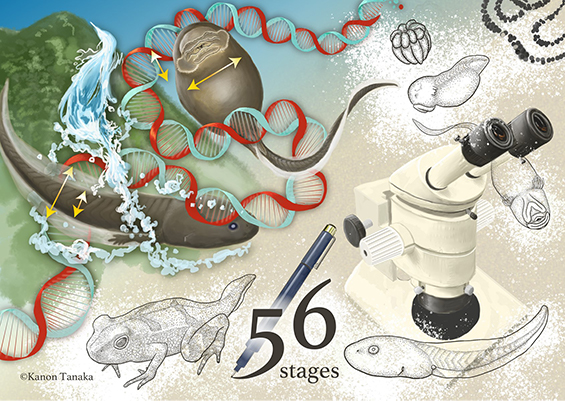2022-02-28 スイス連邦工科大学ローザンヌ校(EPFL)

Selection of pastries © iStock / EPFL 2022
A new global study by researchers from EPFL, the University of Fribourg, and Microsoft Research has found there was an overall surge in high calorie foods such as pastries, bread and pies during the first wave of the COVID-19 pandemic, with potential implications for public health.
The COVID-19 pandemic has altered people’s lives around the world. By mid-May 2020, 2.5 billion people or more than one-third of the global population, had been asked or ordered to stay at home by their governments to prevent the spread of the deadly virus.
New joint research published today in the journal Nature Communications, led by the Data Science Laboratory in EPFL’s School of Computer and Communication Sciences, together with collaborators from Microsoft Research and the University of Fribourg, shows us just what we were doing during COVID-19’s first wave when we were confined in our houses – dreaming about, and likely eating, high calorie comfort food.
As diets were suspected to have become less balanced during the first COVID-19 lockdowns, with potentially important ramifications for public health, the researchers leveraged passively collected large-scale digital trace data to analyze changes in food-related interests across eighteen countries.
Specifically, they captured the popularity of Google search queries related to almost 1500 foods (e.g., bread, pizza, pies) as well as ways of accessing food (e.g., restaurant, recipe) obtained in an aggregated form via the Google Trends tool, to analyze changes in food-related interests.
“We saw that as our mobility was drastically reduced and we started to spend more time at home, there was an overall surge in interest in food and we could see that this surge was more drastic and lasted longer than, for example, what usually happens around Christmas and Thanksgiving. We also found that these increases were most drastic for carbohydrate-based foods like pastries, pies, regular breads and banana bread – the king of the pandemic,” said EPFL’s Kristina Gligorić, PhD student in the School of Computer and Communication Sciences and lead author of the study.
Google Trends search volumes have been shown to be a powerful population-scale sensor for different human behaviors, including unemployment, trading decisions and voting, so this research adds to a rich literature that, well before COVID-19, had begun to analyze health and nutrition behaviors using digital trace data.
The researchers tracked data throughout 2020 and discovered an interesting difference between the first and second waves of COVID-19, “We saw that in the second wave the impact on dietary interest was a lot smaller even though mobility restrictions were very strict in December 2020. We can speculate that people already had recipes so didn’t have to search for them again or it could be that the first wave of the pandemic was such a shock that when the second wave arrived it was already something familiar,” Gligorić continued.
The researchers believe that a major benefit of using digital data in this way was the ability to generate an immediate and detailed picture about what was happening around the world in a time of crisis but caution that it is a proxy for real behaviors – searching for food or a recipe doesn’t necessarily mean the food was consumed.
That’s why Gligorić believes there is ample room for follow up studies, “I think it’s really important in future studies to connect back these kinds of data with eventual clinical outcomes related to diets and most notably obesity and diabetes. Another avenue for further research would be to try to identify the impact of COVID-19 related measures on individuals as opposed to entire populations, which would have immediate implications for monitoring and improving dietary habits.”
Finally, the authors hope the research will help policymakers in the future, given that lockdown decisions can affect so many people, “This extends beyond COVID-19 and the current crisis to other kinds of scenarios where people might be instructed to spend more time at home, due to other new viruses and diseases or events related to weather. The measures that are implemented affect the mobility of populations and are likely to have implications for diets and long term public health outcomes,” concludes Gligorić.
The paper, Population-scale dietary interests during the COVID-19 pandemic, was published today in the journal Nature Communications. It is joint research from the School of Computer and Communication Sciences, EPFL; the Population Health Laboratory, University of Fribourg, and Microsoft Research, Redmond, Washington. The research teams have been collaborating since 2018 as part of the Microsoft Swiss Joint Research Center.
Abstract
The SARS-CoV-2 virus has altered people’s lives around the world. Here we document population-wide shifts in dietary interests in 18 countries in 2020, as revealed through time series of Google search volumes. We find that during the first wave of the COVID-19 pandemic there was an overall surge in food interest, larger and longer-lasting than the surge during typical end-of-year holidays in Western countries. The shock of decreased mobility manifested as a drastic increase in interest in consuming food at home and a corresponding decrease in consuming food outside of home. The largest (up to threefold) increases occurred for calorie-dense carbohydrate-based foods such as pastries, bakery products, bread, and pies. The observed shifts in dietary interests have the potential to globally affect food consumption and health outcomes. These findings can inform governmental and organizational decisions regarding measures to mitigate the effects of the COVID-19 pandemic on diet and nutrition.


